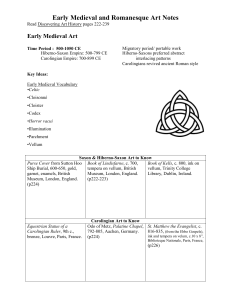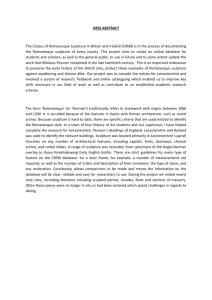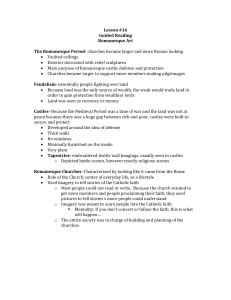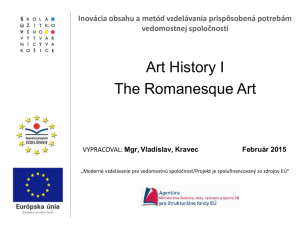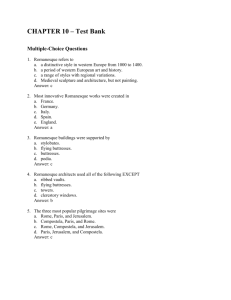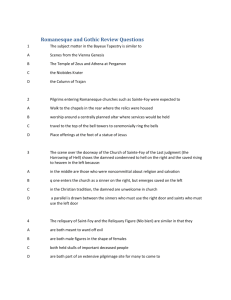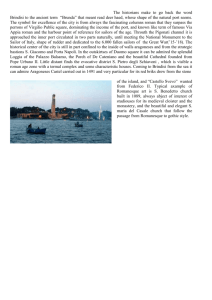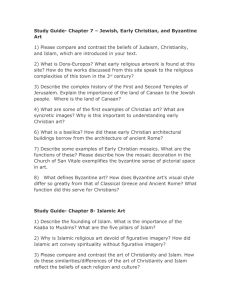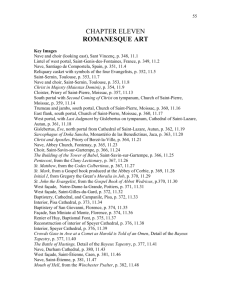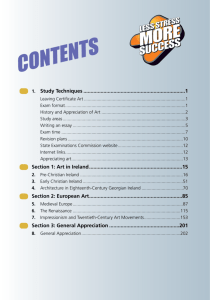The Age of Pilgrimages – Romanesque Art Reading Questions
advertisement
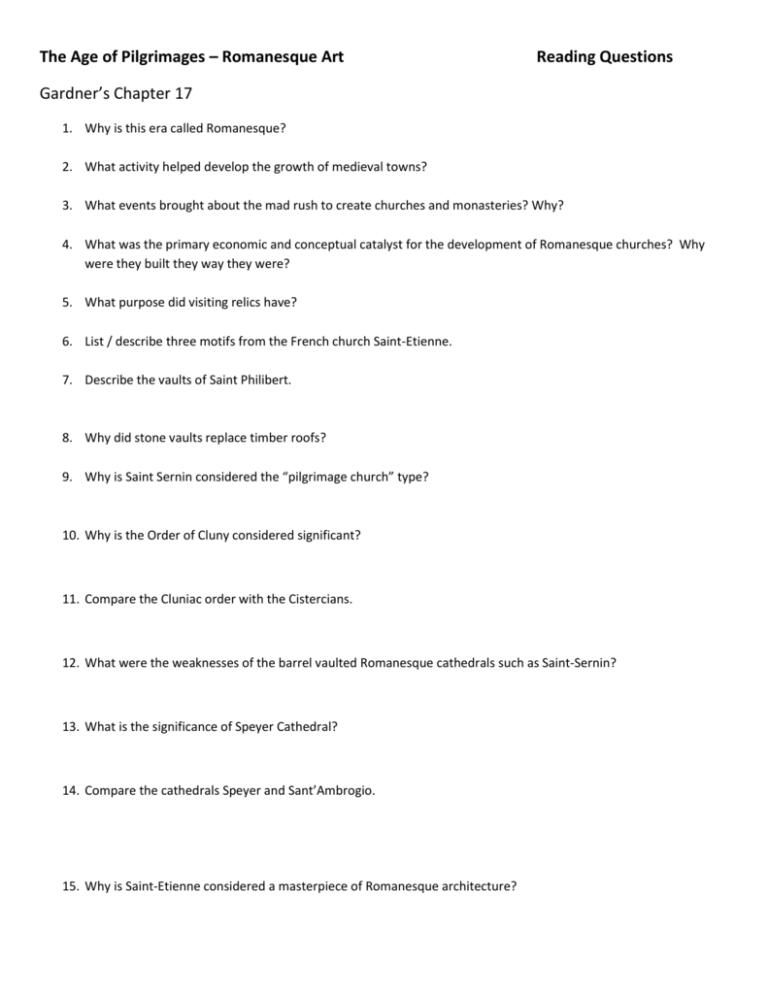
The Age of Pilgrimages – Romanesque Art Reading Questions Gardner’s Chapter 17 1. Why is this era called Romanesque? 2. What activity helped develop the growth of medieval towns? 3. What events brought about the mad rush to create churches and monasteries? Why? 4. What was the primary economic and conceptual catalyst for the development of Romanesque churches? Why were they built they way they were? 5. What purpose did visiting relics have? 6. List / describe three motifs from the French church Saint-Etienne. 7. Describe the vaults of Saint Philibert. 8. Why did stone vaults replace timber roofs? 9. Why is Saint Sernin considered the “pilgrimage church” type? 10. Why is the Order of Cluny considered significant? 11. Compare the Cluniac order with the Cistercians. 12. What were the weaknesses of the barrel vaulted Romanesque cathedrals such as Saint-Sernin? 13. What is the significance of Speyer Cathedral? 14. Compare the cathedrals Speyer and Sant’Ambrogio. 15. Why is Saint-Etienne considered a masterpiece of Romanesque architecture? 16. What is the significance of Durham cathedral? 17. Why is the Pisa complex considered Romanesque? 18. What are the Romanesque elements of the Florence Baptistery? P. 459 19. In what ways did earlier cultures influence Romanesque sculpture? 20. Where and why were bestiaries created? 21. What explains the rise in the production of stone sculpture? 22. What made Bernard of Clairvaux an important figure? 23. How are the figures in Wiligelmo’s Adam and Eve frieze different from late Roman relief sculptures? 24. Compare the figures in the tympanum of Saint-Pierre with the Adam and Eve frieze. 25. Describe the figures and structure of the tympanum at Saint-Lazare. 26. List three effects the Crusades had on Europe. 27. List 5 Romanesque sculptors / artists and cite an example of their work. 28. Why was the creation of sculptures mostly forbidden during much of the Romanesque period? 29. Describe the subject, style and significance of the Morgan Madonna. 30. List three important female figures during the Romanesque period and why they are important. 31. Describe the Bury Bible’s scene with Moses. 32. Compare Eadwine the Scribe’s physical appearance with Moses from Bury Bible. 33. Describe one scene from the Bayeux Tapestry. Why is the work significant? 34. Compare the Bayeux Tapestry with the Adam and Eve Frieze. Compare Bayeux with Trajan’s Column. Key Points • Romanesque is a term that defines a style that is neither indigenous nor strictly regional. Romanesque, literally “in the Roman style,” was a sensibility that informed building techniques and decorating styles. • The original Roman roads throughout Germany, France, Spain, and Italy provided pilgrimage routes for devout pilgrims wanting to travel to venerate before the important relics throughout Europe. Attached to each relic was a major pilgrimage church capable of holding thousands of pilgrims at a time. • Romanesque sculpture is typically found at the portals of these pilgrimage churches, and there a pilgrim would encounter an apocalyptic vision of Christ saving and damning human souls. This didactic style served to provide a mostly illiterate population with the important Biblical stories in an effort to teach them Christian values and, perhaps, control them. • There were, however, departures from this new artistic flourishing. The Cistercians with their severe views about art and imagery provided a foil for the rest of western Europe as it began to embrace the arts with more vigor than it had in 700 years.
